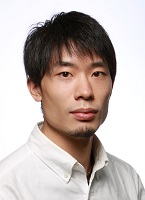ESR2 – Yuta Miyanishi
 Research Project 4 “Accommodation and convergence cues on transparent display media” (TAU)
Research Project 4 “Accommodation and convergence cues on transparent display media” (TAU)
Progress of the project
- A comprehensive literature review has been done on the key technology of the research project, namely the application of light field imaging on providing focus cues. The review was presented in The first European Light Field Imaging Workshop (ELFI 2019). Conference proceedings are available in EURASIP.org.
- A theoretical study about providing focus information, or “accommodation cue”, in light field displays was published in a journal paper. doi:10.1364/oe.458651
- A dedicated light field display and an ophthalmological instrument have been installed in a research facility at Tampere University (Centre for Immersive Visual Technologies).
- A study about evaluation of the light field display both in measurement and simulation was presented in a conference.
- Further studies have been planned in collaboration with a research team at Newcastle University.
Project Information
This project aims to develop an algorithm to provide visual depth information properly and effectively on transparent 3D displays such as a windshield of a work machine. In many of safety-critical conditions, visual information of depth is crucial for usability, productivity and safety. Therefore, in making a remote control system really practical, reproducing rich and robust depth information at the interface must be one of the most important element.
There are many class of visual information sources, namely depth cues, which human vision uses in the natural environment. Typically, in conventional 3D displays, binocular disparity cue is provided but the accommodative (focus) cues are not. That makes mismatch between depth cues, which causes not only decrease of the perceived depth but also visual discomfort or fatigue in the user.
To solve this sort of the depth cue conflict on 3D displays, the potential of a super-multi-view display is considered in this project. As the first part of the project, psychophysical experiments will be conducted. This part will give us a clue about the value in the display parameters which is required to provide enough quality in the depth perception. My background of vision science and competence in conducting these experiment will strongly support to handle this issue. The second part is theoretical evaluation of the display with an optical model. The algorithm is oriented to be scalable, which means that the application of the algorithm will not be limited to a specific scale of transparent displays. Since it is impossible to investigate all of the displays by subjective experiments, evaluation with a theoretical optical model must expand the knowledge from the experiments into developing many kinds of practical displays.
Publication
- Y. Miyanishi, E. Sahin, and A. Gotchev, “Providing focus cues by light field displays: A review,” European Light Field Imaging Workshop (2019). Proceedings archive
- Y. Miyanishi, E. Sahin, and A. Gotchev, “Optical modelling of accommodative light field display system and prediction of human eye responses,” Opt. Express 30, (2022). doi:10.1364/oe.458651
- Y. Miyanishi, Q. Zhang, E. Sahin, and A. Gotchev, “Observed optical resolution of light field display: Empirical and simulation results,” IS&T Electronic Imaging 2023, (2023). In Press
Contact information
Yuta Miyanishi
3D Media Group, Tampere University
Website:
https://ymiyanishi.wordpress.com/
Email:
yuta.miyanishi [at] tuni.fi
Visiting address:
TE308, Korkeakoulunkatu 10,
FI-33720 Tampere, Finland

 This project has received funding from the European Union’s Horizon 2020 research and innovation programme under the Marie Sklodowska-Curie grant agreement No 764951.
This project has received funding from the European Union’s Horizon 2020 research and innovation programme under the Marie Sklodowska-Curie grant agreement No 764951.